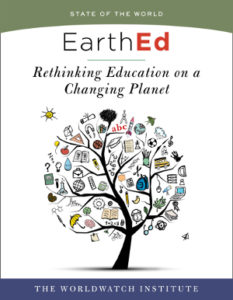Building a National Community Resilience Corps
April 18, 2017
 In the dark days of May 1934, U.S. First Lady Eleanor Roosevelt expressed deep concern about the lasting impact of the Great Depression on young people, who had no previous experience of rewarding work or prosperous times to recall. “I have moments of real terror when I think we might be losing this generation,” she told the New York Times. “We have got to bring these young people into the active life of the community and make them feel that they are necessary.”
In the dark days of May 1934, U.S. First Lady Eleanor Roosevelt expressed deep concern about the lasting impact of the Great Depression on young people, who had no previous experience of rewarding work or prosperous times to recall. “I have moments of real terror when I think we might be losing this generation,” she told the New York Times. “We have got to bring these young people into the active life of the community and make them feel that they are necessary.”
Mrs. Roosevelt championed the formation of the National Youth Administration (NYA), which joined the better-known Civilian Conservation Corps (CCS) in providing incomes, skill building, and meaningful work for millions of young people. CCS members planted billions of trees, built or improved facilities at more than eight hundred parks across the United States, and profoundly changed Americans’ appreciation of nature and the value of environmental conservation.
Young people today face their own share of economic and financial challenges, along with other, very real, fears about their future—most notably, the climate crisis. Much has been made of the recent economic recovery, but sixteen- to twenty-four-year-olds have found it more difficult than most other age groups to enter the workforce, with employment in this group falling 9.7 percent from 2000 to 2016. They also are hamstrung by catastrophic levels of student debt, which has risen 423 percent since 2003. At the same time, multiple polls have shown that millennials are more worried than older generations about climate change and strongly favor reducing the use of fossil fuels.
Considering the economic insecurity that even a smooth transition to a postcarbon economy will bring, might it be time to bring back the NYA or the CCS, or to establish something like these for the twenty-first century?
The idea of government-supported service never really went away in the United States. The CCS helped inspire the Peace Corps and continues its legacy in the form of state and local conservation corps across the country. The federal government operates a number of national service programs—most notably AmeriCorps—through the Corporation for National and Community Service. Many of these, along with nonprofit programs such as Green Corps, offer young people opportunities to engage in conservation, environmental education and activism, and even climate adaptation and disaster response efforts.
Although these valuable programs engage thousands of young people every year, we desperately need much more, lest we lose not only this generation, but countless generations to come. The climate crisis presents a challenge that justifies a vast mobilization of the public as much as the Great Depression did. One means of doing this would be to form a National Community Resilience Corps (NCRC), which would harness the untapped passion, creativity, and labor of millions of young people to implement projects to grow resilience and build sustainability in tens of thousands of communities across the country. The NCRC could expand from the new Resilience AmeriCorps program and provide full-time employment for eighteen- to twenty-five-year-olds for a period of two years.
NCRC members would support the development of a range of community projects, such as:
- Community Resilience Assessments, designed to engage community members in identifying shared values, vulnerabilities, and opportunities for intervention;
- community education, including in the areas of systems thinking, ecoliteracy, and resilience science;
- hands-on soil and energy conservation programs;
- the development of distributed, community-owned renewable energy and food enterprises, along with other critical local and regional services and goods; and
- growing community connections and engagement.
Like other service programs, the NCRC would deliver basic training in community organizing, communications, and specific project-related tasks. Critically, it also would invest in providing foundational education for its members, so that they can: 1) understand the true nature of interrelated environmental, energy, economy, and equity crises of the twenty-first century, and 2) build their capacity to think systemically and apply resilience science and practice to their lives and work. After all, thriving on a changing planet will require a whole new way of thinking.
Excerpted from Chapter 18 of EarthEd: Rethinking Education on a Changing Planet
Join the webcast on April 20th, 2017.

世事无常,但这个博客定能永保辉煌!
We urgently need a Civilian Conservation Corps installing water slowing and sequestration infrastructures across the planet at a fine-grained scale. Under-employment problem? Not anymore. For a fraction of the cost of drought or flooding disasters, millions can be educated and employed at all levels building gabions and check dams, earthen dams, dikes, balks, terraces, and contour ditches which can be created quickly without specialized tools or materials. These structures can endure for generations and so represent excellent investments. Water slows down and infiltrates into soils, making more groundwater available to sustain more plant growth for a longer time each season promoting better transpiration, cooling, cloud formation, and rainfall. This moderated rainfall strengthens springs, streams, rivers, lakes and estuaries. Water thus conserved can be put to work building deep rich soils and their consequent eco-systems, including agro-ecosystems for human nurturance. Starting with marginal lands, millions of new settlements across restored landscapes can quickly become self-supporting. This work can sequester enough millions of giga-tons of carbon to cool the climate to safe levels. It can also redefine the meaning of work and solve social problems.